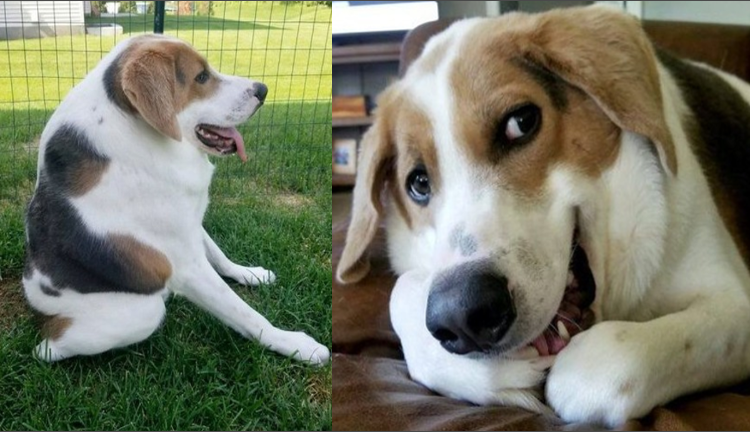He was discovered in a closed room while his owner was away, and because he was so underweight, no one wanted to take him. We adopted Harlow from a P.S.A. shelter in January 2021.

When I brought him inside, he was afraid to stay there, so I had to stay by his side and talk to him to make him feel better. Additionally, he was fed so he could put on weight.

THE NEXT DAY, HE COULD PLAY A LITTLE WITH JADA OUTSIDE, BUT WHEN WE LEFT HIM ALONE – HE FELT REALLY UNHAPPY, SO BASICALLY I HAD TO TALK WITH HIM ALL THE TIME, EVEN ALLOWING HIM TO SLEEP IN MY ROOM FOR A FEW DAYS.

He gained 2 kilograms after a week thanks to his good appetite, but he still looked quite thin and was at worst 20 kilograms underweight.

He became more self-assured and less inclined to worry over time. He also learned to walk, stopped being afraid of the dark, and developed a fondness for running around in the garden.
“I GAVE HIM A FIRST TRIP TO THE BEACH AFTER 3 MONTHS, AND HE ENJOYED IT SO MUCH,” the author said.

Let’s take a look back at Harlow’s incredible transformation. He is now a healthy, confident, and occasionally mischievous dog because he loves to play so much.
He has this bad habit, which I abhor so much, but it’s good that he was able to forget about it.
6 Most Common Cat Health Problems
Cats are good at self-maintenance. But even your fastidious feline can’t prevent some of these more common cat diseases and health issues.
1. Vomiting
Vomiting is a very common problem with cats with a multitude of causes. They range from eating something poisonous or inedible (like string), to infection, urinary tract disease, or diabetes to hairballs.
2. Feline Lower Urinary Tract Diseases (FLUTD)
TSome estimates say as many as 3% of cats seen by vets have feline lower urinary tract disease (FLUTD), which is actually a group of feline diseases with multiple causes.
List bellow:
Drinking more
Straining to urinate
Bloody urine
Urinating in unusual places
Crying when urinating
Licking around the urinary area (often because of pain)
3. Fleas
Fleas are a very common external feline health problem. But it’s one you can easily treat. Signs your cat has fleas include:
Flea dirt on its skin (they look like tiny black dots)
Constant scratching
Frequent licking
Red or irritated skin
Hair loss
Skin infections or hot spots
Read More



Leave a Reply